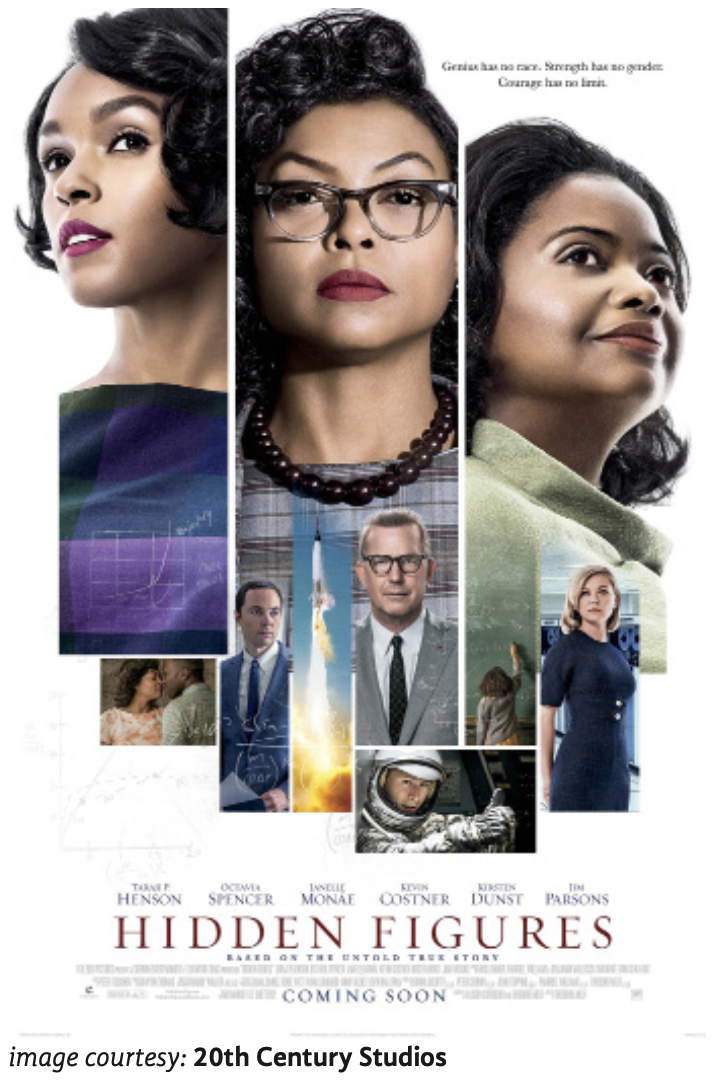“Hidden Figures” in women’s history
March, 2025
“Hidden Figures” (2016) tells the story of three Black women: Katherine Johnson, Dorothy Vaughan, and Mary Jackson, who work at NASA, battling social barriers and scrutiny. In the midst of the Space Race, the three women act as the brains behind the launch of astronaut John Glenn, elevating national moral and changing the future of America. This movie, based on real-life events, represents one of the many times in American history where women have had to confront the challenges that come with being seen as inferior and weaker than men, and therefore less capable.
This film shows the personal lives of each woman, overcoming challenges both at work and at home. Johnson is a single mother of three children who often is unable to play an impactful role in her children’s lives due to overtime. Jackson, while discriminated against in her job, also has tensions with her husband due to their differing opinions on how their children should be raised, often leading to arguments. Additionally, she fought for desegregation in education in order to get her degree. Vaughan faces significant trouble in the workforce when her hard work gets overlooked due to her race and gender.
“Hidden Figures” is a wonderful movie demonstrating the hardship that women have had to face in the workforce. In the mid-1900s, while women were bound to the societal expectations of being mothers, they were also challenged at their jobs, receiving less pay than men and being treated unequally. For example, when Johnson worked at her new permanent job in the Spacecraft Controls Branch, there was no women’s bathroom for people of color. If she had to take a bathroom break, she would be forced to walk at least a mile to use the closest available bathroom.
One day, Johnson takes longer to use the bathroom due to heavy rain. Being ignorant of her situation, her supervisor criticizes her for being lazy, threatening to fire her. Johnson snaps back in a moment of frustration: “And I work like a dog day and night, living on coffee from a pot none of you want to touch! So, excuse me if I have to go to the restroom a few times a day.” Her words incredibly powerful, showing that women have the power to push back against societal standards placed by their oppressors.
Additionally, during NASA’s supervisor applications for workers of colors, Vaughan, despite being qualified for the job, is ignored due to her skin color. Rather than shying away from the multiple rejections by her own boss, Vaughan continues to prove herself through her work. She works hard and manages to solve a math problem that her white peers had trouble solving. Due to her hard work, she showed her capabilities, earning her the role as the first black supervisor at NASA.
Combining the three women’s eventful and hectic experiences with the skills of the actresses portraying those characters, “Hidden Figures” successfully tells a well-thought- out story. These women prove society wrong. They show the world that they too, are capable of doing those that men are expected to do. The title truly speaks for itself, for despite the impactful roles these women have played, they are hidden figures of our history.
This movie gives light to the women who have helped us advance in society while addressing the struggles that Black Americans faced in the early 1960s. Every scene in this movie played an important role in building the plot — characterizing the powerful women and portraying their willpower. Ultimately, “Hidden Figures” is an inspiring movie that highlights women’s past contributions, giving them the recognition they deserve, while leaving the audience with a sense of fulfillment and pride.